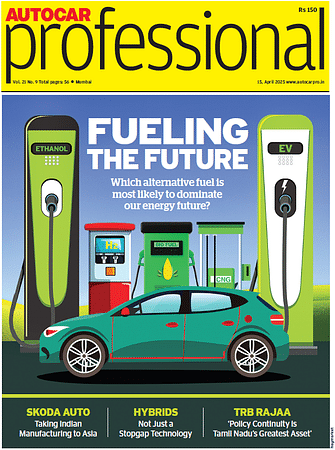'We have a three-pronged strategy for sustainable mobility': Volvo Group's Maria Ebbesson
The Swedish commercial vehicle giant is confident about the potential of multiple powertrain technologies to drive sustainability globally, while estimating a prominent role of alternative fuels like natural gas and hydrogen for the Indian CV market.
Sweden’s Volvo Group is making a strong move towards sustainable mobility, with a clear focus to offer a completely fossil fuel free product portfolio by 2040. As a result, with a 10-year average product lifecycle of heavy commercial vehicles (trucks and buses), the company envisions achieving fossil-fuel free products in the market by 2050.
According to Maria Ebbesson, Vice President, Vehicle Engineering, Volvo Group, “We have a three-pronged strategy, wherein we think that there is not going to be one silver bullet towards sustainability. Therefore, we have the BEVs, FCEVs, and the ICEs as well which will continue to remain important for certain applications and certain markets.”
Ebbesson who leads Volvo Group’s India R&D centre which is in Bengaluru, and is the global truck-and bus manufacturer’s largest R&D centre outside of Sweden, says the sustainability trends in the heavy commercial vehicle (HCV) segment in India are going to be different compared to rest of the world.
“In India, while we see a notable progress in EV adoption in the country, it is more in the two-, three- and passenger vehicle segments, and not so much in HCVs. Although we have the EV technology, we do not see the market or infrastructure yet being there. Therefore, we see alternative fuels like natural gas and hydrogen being more prominent for HCVs in India,” Ebbesson says.
The flourishing Volvo Group R&D Centre in Bengaluru is undertaking cutting-edge R&D in the areas of vehicle engineering and technology development. While a lot of software development takes place at the centre, it also executes development of electrical architectures of future products, as well as innovates in the areas of powertrain and safety.
"We are seeing the SDV shift in CVs as well, and it is more about bringing a complete experience to the customer. With the joint venture with Daimler Truck and Volvo, we are jointly developing the base high-volume ECUs and electrical systems that are core to any truck or bus. We are leveraging synergies to work better with suppliers and offer a more innovative offering to our customers," she says in this video interview.
VIDEO:
RELATED ARTICLES
'Close to 50% cars sold in India will be electrified in the future': R Velusamy
With hybrids and EVs gaining momentum amidst the drive towards net-zero carbon emissions, electrified powertrains are se...
'We aim to hedge the dependency on Europe with more markets': Klaus Zellmer
With its recent foray into Vietnam with a major reliance on CKD kits from India, Skoda aims to diversify its business ou...
Panel Discussion | Alternative Fuels Powering Sustainable Mobility | Future Powertrain Conclave
In this discussion, industry experts delve into the topic of alternative fuels such as biogas, ethanol, and hydrogen, an...






 15 Nov 2024
15 Nov 2024
 4399 Views
4399 Views





 Autocar Professional Bureau
Autocar Professional Bureau




